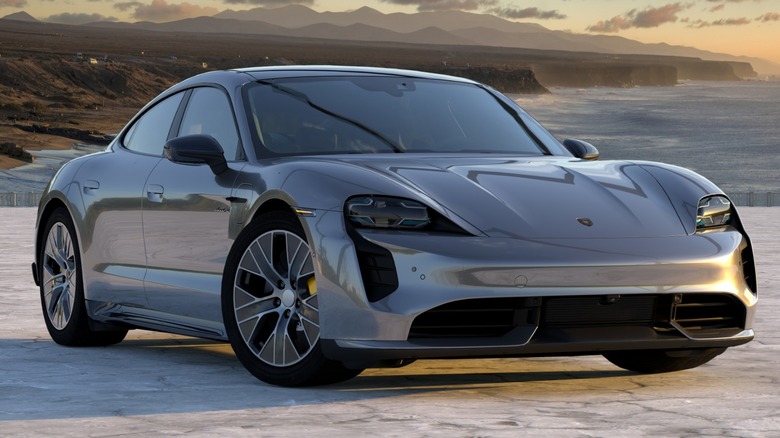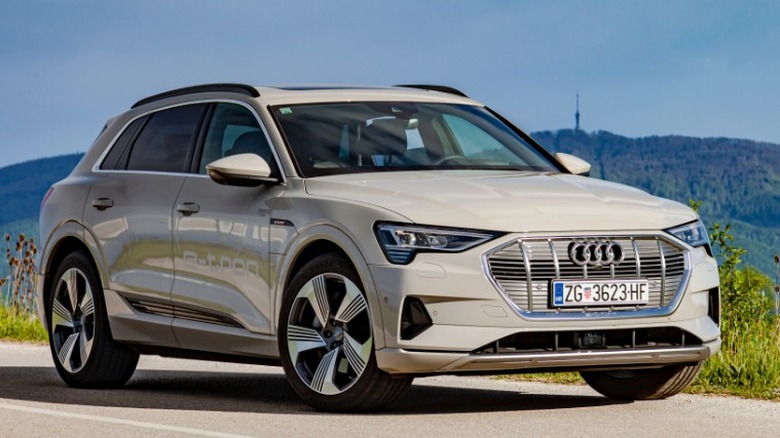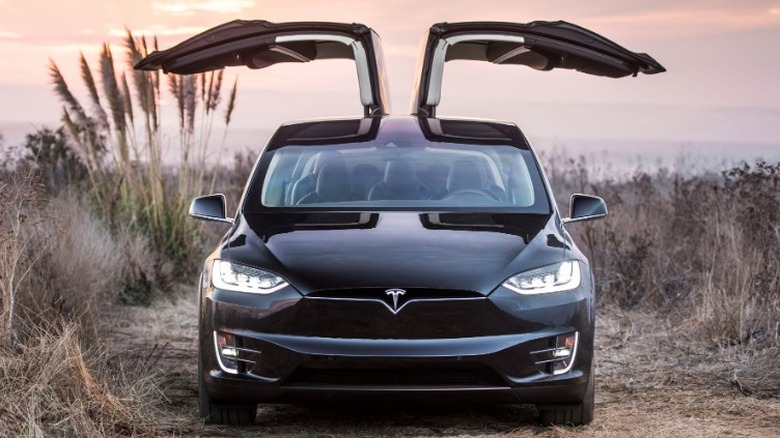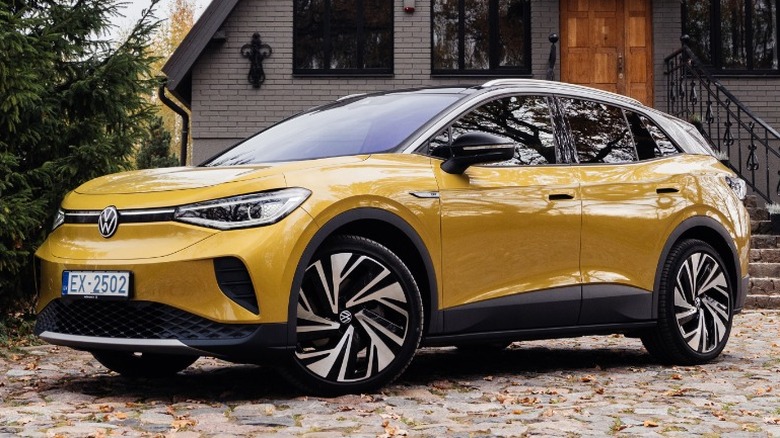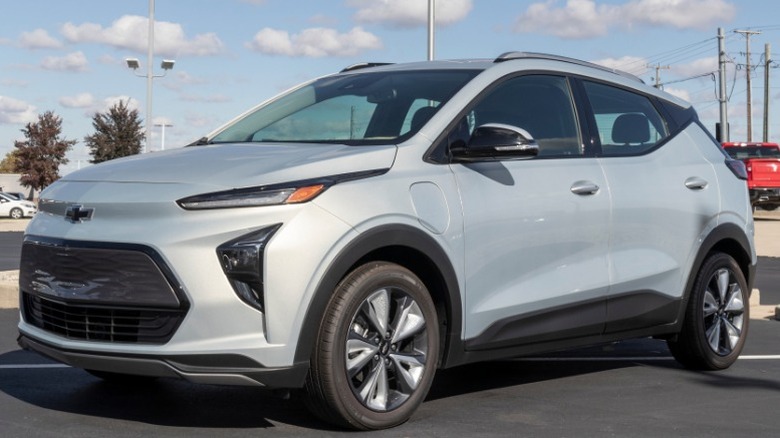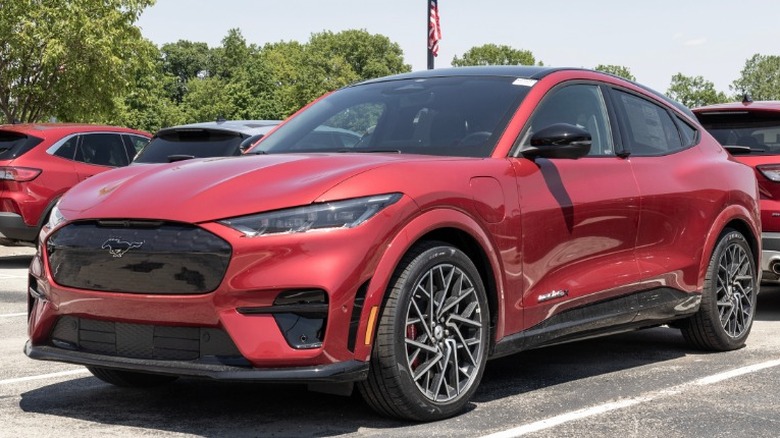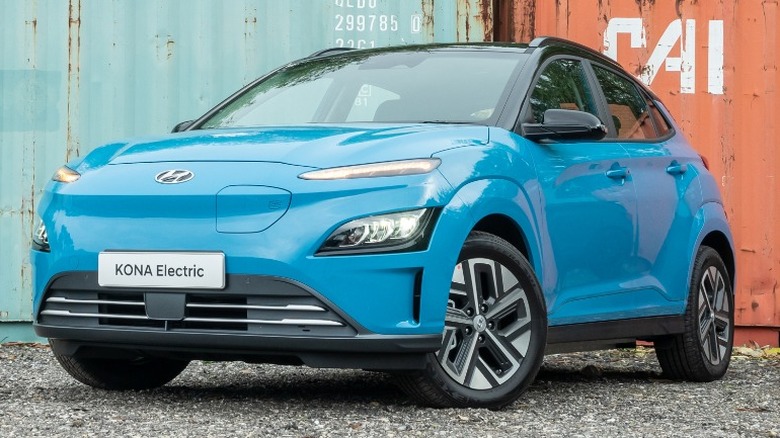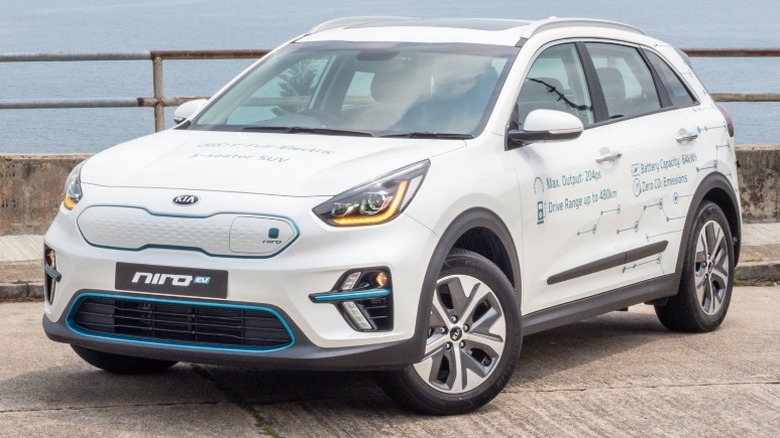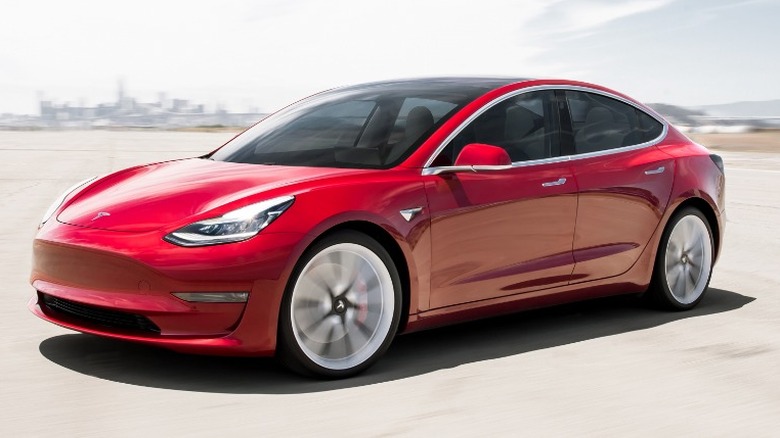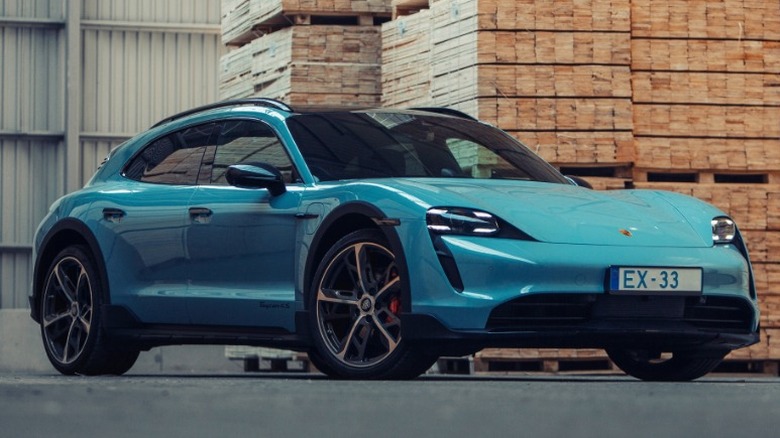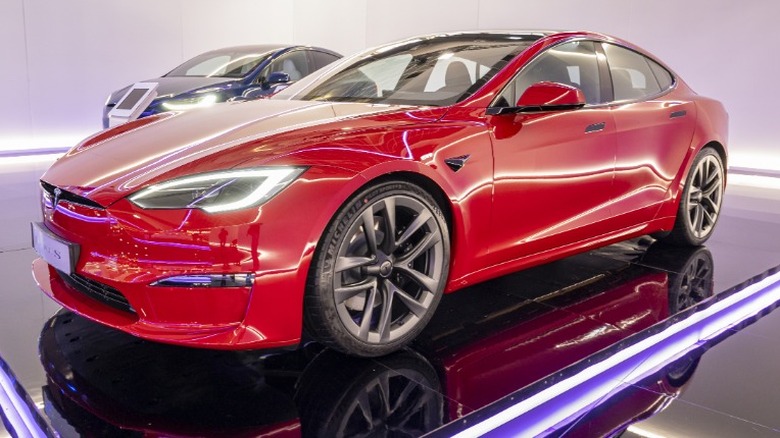10 Electric Cars With The Highest Maintenance Costs
While the promise of electric car ownership suggests maintenance to be a thing of the past as oil changes, fuel filters, and timing belts are no longer a part of the package, they still have certain running costs. EVs have cooling systems and parts that wear over time in the brakes and suspension, so maintenance is still required. Regenerative braking significantly reduces the use of brakes and, therefore, makes them last much longer, but tire use is another story. The batteries that provide power for the motors add substantially more weight than what is seen with conventional automobiles. EVs require specific tires that can be expensive and also wear out faster than others, adding to running costs. EVs also have suspensions and cooling systems to attend to, so EV owners don't get off the hook for maintenance completely.
If you are considering an EV, you should know of the costs associated to go along with any potential savings. Some maintenance and repairs will be needed over time. They may have fewer moving parts, but electronics can be fragile and finicky, requiring professional repair from time to time, and often at a higher labor rate performed by the few techs currently trained on electric cars. This factors into how much you may spend while owning an EV, which makes it relevant in considering the total running costs. Although the total pool of electric-powered cars is small but growing, these models have the highest maintenance costs over a typical ownership period.
Audi e-tron
Audi's parent company Volkswagen is going all-in on electric vehicles, so it is no surprise that its luxury arm is manufacturing its own models. The e-tron presents a bevy of cutting-edge features backed up by the latest technology. Its electric drivetrain offers up to 426 horsepower and 596 lb-ft of torque in its top trim level, and all of them offer a refined luxury experience once inside. Some of its highlights include an LED headlight, adjustable air suspension, dual front touchscreens and digital gauge cluster, and seat heating and cooling. If Audi is trying to reach the executive class with this car, it shows the brand has done its homework. However, the new e-tron naming convention is a bit confusing, as the e-tron SUV is now the Q8 e-tron, which is different from the e-tron GT and Q4 e-tron. Perhaps Audi should scrap it and start naming cars after predator animals.
One thing the new Audi e-tron line may not have going for it is the company's reputation for reliability. RepairPal ranks it at 28 of 32 brands, a rather poor showing. According to Edmunds, the e-tron will likely see $1,934 in repairs and $6,382 in maintenance. While the actual repair bill is modest, the maintenance cost is very high.
Tesla Model X
EV trailblazer Tesla set the stage for today's proliferation of electrically-powered models. Its model X SUV broke the mold by introducing a family car with doors that would look more at home in a Star Trek episode. Its oddly-hinged falcon wing doors look much like something on a shuttlecraft, which makes them also appear to be more of a party trick than a practical point of ingress and egress. In practice, they are practical and useful. But when they break, expect a high repair bill.
Aside from the doors, the Tesla Model X costs are in line with other Tesla models. The drivetrains and platforms among all models are similar and share technologies. Tesla vehicles have relatively reliable drivetrains, but problems with fit and finish can be frustrating and require a Tesla Service Center, which may be harder to find than for other brands. The Edmunds estimates for the model X in the base model or Plaid designation assume repairs of $2,295 and maintenance costs of $2,887.
Volkswagen ID.4
VW has grand plans for electrification across its lineup in the coming decade. New models are coming down the pike, but the ID.4 demonstrates what to expect from an electric vee-dub. By most accounts, VW has created a competent electric SUV in the ID.4, and though it may not be sweeping any potential buyers off their feet, it certainly is providing them the basics in comfort. With a range of 209 miles — an optional battery pack boosts the range to 255 — it still lags a bit behind some of the competition. Nevertheless, this is the first of many electrified VW models to come, and it is a worthy starting point.
Like its luxury arm, Audi, VW's reliability rating overall is lacking. RepairPal places VW a bit higher at 12th overall, so it is fair to assume your new ID.4 will see the service department at least a few times over several years. Edmunds estimates still put its costs under the comparable and much more expensive Tesla model with maintenance running $3,250 and $962 in repair bills.
Chevrolet Bolt
With much of the early EV adoption coming to customers as high-end luxury cars too expensive for most people to own, electric adoption has been slow for the masses. Chevrolet has helped to change that by providing a well-rounded EV at an affordable price with its Bolt EV and EUV. For an affordable model, the Bolt has a lot going for it. The Bolt is a small and attractive crossover that provides lively driving and excellent range for its class at 259 miles. However, its fastest charging options are way too slow and the architecture on which it is built is incompatible with GM's Ultium platform that will underpin future EV models across the company brands, and that is why the Bolt is going away for the next model year.
So long as you can tolerate the slow charging and can make the most of topping off the battery at home, the Bolt can provide economical driving in a modern and pleasing little package. But most folks know that a lower price of entry does not guarantee future savings when talking about automobiles. This appears to be the case with the Bolt as Edmunds predicts future investment in your Bolt ahead. With repairs at $793 and maintenance up to $1,848, the Bolt isn't breaking the bank like some others, but will still need your attention from time to time.
Ford Mustang Mach-E
The 2021 introduction of Ford's Mustang Mach-E made waves among many groups, including motor journalists and everyday fans. Far from being a front-engine, rear-drive coupe, this vehicle redefined the pony car as this electrically-powered brethren is more of a family wagon than a fire-breathing muscle car. Regardless, the new Mustang EV holds its own as an impressive and capable automobile. It combines Ford's abilities as a global manufacturer to keep quality control high and assembly lines moving with advanced engineering that comes from having decades of experience.
All of this is to say that the Mustang Mach-E is a great first step out as Ford's initial EV built ground up on a dedicated platform. Performance is excellent, the interior is classy, and the range is above average — more than 300 miles with a full charge. Perhaps the biggest benefit of buying a Mach-E is the availability of service centers as Ford dealerships can be found across the country in cities small and large. Edmunds tells us driving one of these for a few years will result in less spent on repairs at $848, but the maintenance of $3,664 may sting a bit more.
Hyundai Kona Electric
For years Hyundai was seen as a second-tier foreign manufacturer. However, that image was tossed aside some time ago and the Korean carmaker today is a formidable competitor. Hyundai has been raising the bar for many years with its conventional automobiles, but today, the company looks to set the standard for electric cars. Several new EVs built on dedicated electric platforms are being added to the Hyundai lineup, but the company also offers a few electric versions of gas-powered cars, including the Kona.
The Kona has been around a few years but is receiving a generous facelift for the 2024 model year, bringing its styling up a notch with a noticeable makeover. The new Kona will be in line with other styling directions happening at the company including the digitally-inspired led grids other Hyundais are receiving. At around $35,000, the Kona is a value-driven proposition and the base model's 133 horsepower driving the front wheels only is part of that value packaging. The Kona will not grab headlines for surpassing benchmarks but will ease the transition to electric mobility for many by providing a familiar environment in which to move toward an electric future. However, owners should be aware of upcoming maintenance bills, as KBB lists average maintenance costs to be about $1,224, but data for repairs has not yet been compiled. If it is like other Hyundai models, expect repairs to come in under $1,000.
Kia Niro EV
As a part of the Hyundai automotive group, Kia is also undertaking large projects to electrify the models throughout its lineup. Kia sold its first all-electric vehicle in 2014 with the electrified version of its popular Soul model and has been building its EV expertise ever since. Kia's Niro EV is an electric version of a model the company offers with an electric engine, making the car more conventional than some new EVs.
Despite the fact that this EV's origin lies with a fuel-burning model, it is thoroughly modern and very tech-forward. It also features a clever space-saving feature in which the climate control and audio functions share the same knobs and touchscreen strip, with functions switching based on which mode is chosen. Pricing of the Niro is in the $40,000 range and represents a good value. Edmunds notes that your repairs should be on the low end at $568, but maintenance appears to eat up a larger portion of the budget at $3,905.
Tesla Model 3
The first "affordable" Tesla came as a down-sized sedan offering much of what the Model S did but with a design leaning even more heavily on minimalism. While the Model 3 is Tesla's cheapest vehicle, starting at $42,990, it would be hard to classify it as cheap overall. Even so, you receive a lot for the money, including breakneck acceleration of 0-60 mph in just 3.1 seconds, up to 480 horsepower, and an optional dual-motor AWD system. It's a nimble little car and it doesn't hurt that the interior space is decidedly upscale with forward-thinking technology.
The Model 3 shines with its range of 358 miles, an industry leader that other carmakers are trying to match. Some have caught up to Tesla, but not with their entry-level models. Tech is prominent in this car and it offers such things as Autopilot to guide you on your journey nearly hand-free at times, but also drops most physical controls found inside a car for alternates on the large center screen. There is no doubt the Tesla Model 3 is an excellent car, but if you were to own one, be prepared for some costs. Edmunds predicts maintenance to run about $2,192 with repairs slightly higher at $2,295.
Porsche Taycan Cross Turismo Turbo S
Porsche has for decades been a leader in the production of fast cars. These cars are iconic and have come to represent the best in performance automobiles in general. So, it should come as no surprise that when the company chose to get into the EV foray, its entry would arrive stunning and with high-performance marks.
The Taycan Cross Turismo Turbo S is an impressive machine. With options boosting up to 750 horsepower and a 0 to 60 mph time of just 2.4 seconds, its speed is blisteringly quick. While the top power range is less than the Tesla Plaid and for a much higher cost, this is a Porsche. That means its interior is as sporty as it is luxury and the quality is high with a fit and finish better than most cars. The Taycan is also something that can take corners as well as go fast in the straights. To get the ultra-fast Turbo S model (it's electric, why is it called turbo?), you will shell out more than $200,000. This means your maintenance will be similarly expensive. The Taycan comes in as the most expensive EV to maintain with Edmunds estimating its maintenance at $4,563 and repairs coming in at $3,103. High-performance tires likely contribute to the high price, but high costs are also likely due to overpriced Porsche original parts.
Tesla Model S Plaid
With the Plaid, Tesla introduced us to an epically fast family car — and also to steering with a yoke instead of a wheel. While the speed is an incredible experience every time, the yoke is a bit less exciting, and not everyone has warmed up to it. But the Plaid delivers in connectivity and tech, and it can hit 60 mph in an astonishing 2.4 seconds. Whether you can play video games or browse the internet when parked hardly matters when considering just how fast it really is. When you're not pushing this car to its limits, you can expect a battery range of more than 300 miles per charge.
Most ultra-high-performance cars come with expensive maintenance and repairs. The good news for Tesla Plaid owners is that their ultra-fast car does not require any particularly expensive maintenance when compared to a regular model. So, if you buy a flagship Tesla car model, Edmunds expects you will spend about $2,675 in maintenance and $2,295 in repairs.
